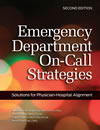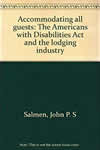All Articles
Accounting
Intellectual Property
Alcohol, Tobacco & Other Drugs
Jails - Prisons - Correctional Facilities
Animals
Land Mapping - Surveying - Zoning
Audio Forensics
Land Use
Business Consulting
Laws & Procedures
Child Welfare
Linguistics
Child Witch Phenomenon
Marketing
Computers
Mediation
Cosmetology: Hair / Makeup
Meditation
Damages
Metallurgy
Digital / Crypto Currency
Mining
Digital Forensics
Neuropsychology
Economics
Nursing
Education & Schools
Obstetrics - Gynecology (OBGYN)
Electrical - Electrocution
OSHA
Elevators - Escalator - Automatic Doors
Plants & Trees
Engineering
Politics
Environment
Psychiatry
Expert Witnessing
Recreation & Sports
Family Issues
Securities
Forensic Analysis
Security
Healthcare
Speech-Language Pathology
Hotels & Hospitality
Spirituality
Industrial Hygiene and Safety
Toxicology
Insurance
Underwriting
More...

TELECOMMUNICATION-PAGE ARTICLES MAIN PAGE
. Contact Us if you are interested in having your work published on our website and linked to your Profile(s).
All Articles
Addiction Issues & Substance Abuse
Injury
Archaeology - Archeology
Insurance
Arms - Guns - Weapons
Insurance Coverage Analysis
Attorney Fees
Intellectual Property
Automotive - Vehicular
Internet Marketing
Biokinetics
Land Use
Child Witch Phenomenon
Linguistics
Counseling
Marine - Maritime
Crime Scene Investigation
Mediation
Crisis Management
Medicine
Damages
Metallurgy
Dental - Dentistry
Mining
Design
Neuropsychology
Documentation Examination & Analysis
OSHA
Elder Abuse
Patents
Electrical - Electrocution
Politics
Energy - Utilities
Premises Liability
Exercise & Fitness
Public Speaking
Failure Analysis
Recreation & Sports
Finance
Securities
Fires & Explosions
Security
Foot / Ankle Surgery
Supply Chain Management
Forensics
Taxation
Gems & Jewelry
Terrorism - Homeland Security
Healthcare
Workplace Violence
More...
Featured Articles
There are no active articles here at this time. Please use the search bar, try another category, or contact us if you would like to contribute an article.
This Article is unavailable. Contact Us
Search articles by title, description, author etc.
Sort Featured Articles
Featured resources
Emergency Department On-Call...
by Jon Burroughs, MD, et al
Sue the Bastards! : Everything You...
by Gerard P. Fox, Jeff Nelson, Jeffrey A. Nelson
Accommodating all guests: The...
by John Salmen, AIA
Follow us










